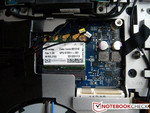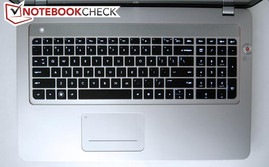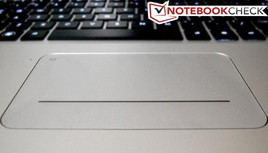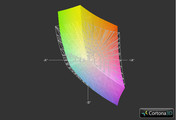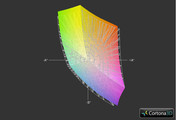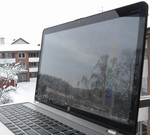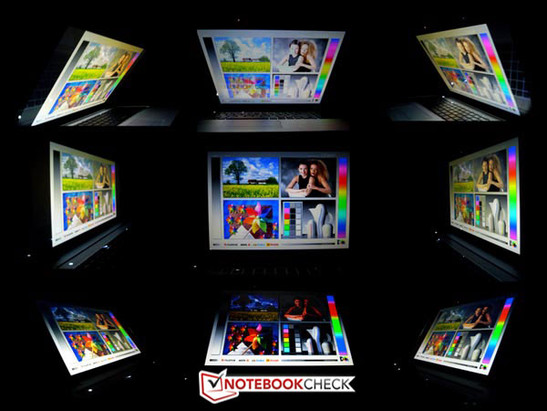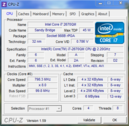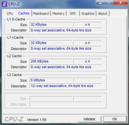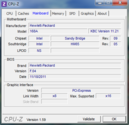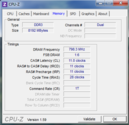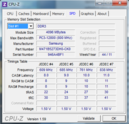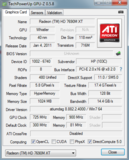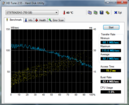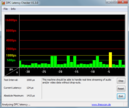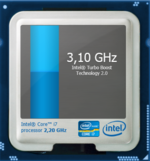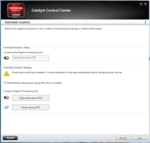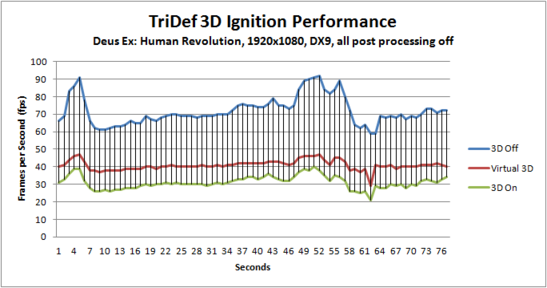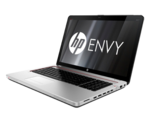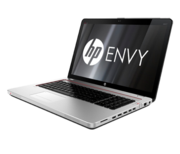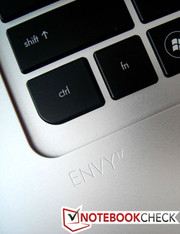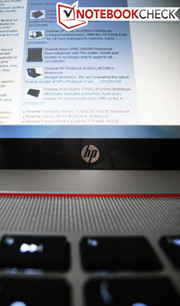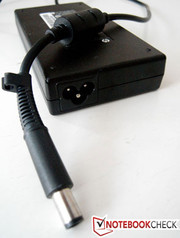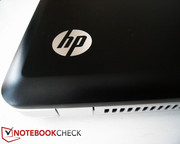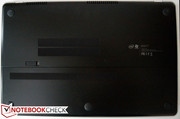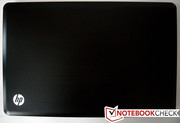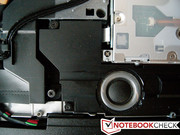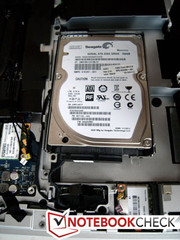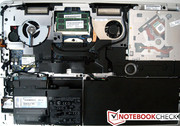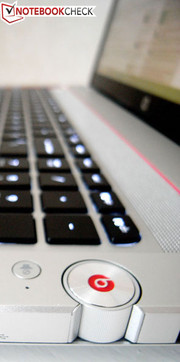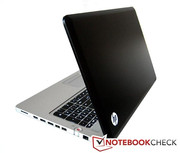Review: HP Envy 17 3D (Early 2012)

If imitation is the sincerest form of flattery, the 17-inch MacBook Pro can consider itself flattered by the Envy 17. To be fair, the Envy 17 can stand on its own merits with an impressive feature set, and the target consumer is quite different. Even if the Envy 17 3D can certainly be used professionally, the stereoscopic 3D feature, Blu-ray player and unusually advanced sound system all contribute to placing this laptop in the entertainment category first and foremost. Therefore, the Envy isn't so much a competitor to the MacBook Pro 17 as it is to the Dell XPS 17 (which is also available in a 3D version).
The HP Envy 17 3D under review is an entry-level configuration now available in the United States and can be considered quite the bang for the buck in terms of included hardware and feature sets. The base configuration ($1,449.99) includes a quad-core processor from Intel’s 2nd-generation Core series, the 2.2 GHz Core i7-2670QM, with 8 GB of DDR3 1333 MHz RAM and a 750 GB 7200 rpm hard drive. Also included is the Radeon HD 7690M—a dedicated upper midrange graphics card that can be switched to integrated Intel graphics to save power and extend the laptop’s battery life.
Another key feature is of course the 120 Hz Full HD (1920x1080) display and the included active shutter 3D glasses. The 3D feature is capable of both movie playback and gaming in 3D via AMD HD3D and TriDef 3D Ignition, respectively. Unlike the new Envy 15, the Envy 17 does not have an IPS panel. This omission is however understandable, since non-TN, 3D-compatible panels are still scarce.
Case
The Envy 17 consists largely of aluminum and the parallels to the MacBook Pro are mostly drawn from the unibody design that encloses the working areas of the laptop. However, this is where most of the visual similarities end. The lid appears to be made of magnesium or a composite material, whereas the bottom of the laptop consists of two metal plates (which look like plastic at first glance). The construction as a whole conveys a high-end impression and feels very solid.
There is no latch to keep the lid in place, but it stays firmly shut thanks to ample resistance in the hinges. The lid cannot be opened 180 degrees--it stops at an approximate 120 to 130 degree angle. One downside to the semi-matte, black lid is that it easily attracts fingerprints. Fortunately, no individual parts of the chassis exhibit flaws such as wobbly hinges or unseemly gaps. There is, however, a moderate amount of flex if you twist the two ends of the lid. For a 17.3-inch desktop replacement laptop, the Envy 17 is not particularly bulky or heavy at 3.34 kg (7.37 pounds).
Disassembling the Envy 17 for upgrades is a simple process. A single latch underneath the laptop gives you immediate access to hard drive(s) and battery, while six small screws stand in the way of access to the two RAM slots and other internal components. This review sample came with a single drive and there is room for another one, but unfortunately there is no extra hard drive cage included. Both RAM slots are occupied by 4 GB modules, meaning that you will have to invest in new 8 GB modules to reach the laptop's maximum capacity (16 GB).
Connectivity
All of the input/output ports are located along the left and right sides of the laptop. On the left side there are two USB 3.0 SuperSpeed ports, one microphone input, two headphone jacks and a standard Kensington lock alongside the slot-loading Blu-ray drive. The right-hand side holds a Gigabit LAN port, yet another USB 3.0 port, one USB 2.0, two full-size DisplayPort outputs, HDMI and a memory card reader (SD/MMC).
There is a liberal amount of ports and it is good that HP has turned the tables to offer 3x USB 3.0 ports and 1x USB 2.0 rather than the other way around, which is more common. A potential problem with the USB ports is that they sit very tightly together – something that might cause problems when one of the ports is in use and you want to connect a thumb drive to the one next to it. This makes it difficult to use insert anything much wider than a regular USB cable. Having the display ports closer to the front edge is also a bit awkward, since there is no easy way to hide protruding cables when the laptop is hooked up to an external display. Having these video ports in the rear is generally preferable, but unfortunately the build style of the Envy 17 prevents such a layout.
Lastly, the fact that the Envy 17 is equipped with dual DisplayPort outputs is very interesting and possibly a unique feature in the market right now. This implies AMD/ATI EyeFinity support for multiple monitors and it should therefore be easy to connect several external monitors to this laptop.
Communication
The Envy 17's wireless network adapter is a high-end Intel Centrino Ultimate-N 6300 with triple-stream (3x3), dual-band (2.4 GHz and 5 GHz) capabilities theoretically capable of transmitting data up to 450 Mbps. A Broadcom 20702 Bluetooth 4.0 adapter is also included. In other words, HP hasn't skimped on network connectivity in the Envy 17 3D.
For visual communication, the laptop comes with a 1 megapixel (up to 1280x800 video resolution) "HP TrueVision HD" webcam. In general, the picture quality is decent albeit unremarkable. HP has also included a basic software for the webcam in the form of CyberLink YouCam 3.5. The built-in microphone located just below the keyboard records with average sound quality – it works, but as usual it is preferable to use a headset.
Accessories
HP deserves some praise for delivering the Envy 17 in very attractive packaging that acknowledges that we are dealing with a premium laptop. The box is very elegant and, again, reminds us of Apple, although HP's is black instead of white. The laptop itself is wrapped in a plush sleeve with an HP Envy 17 logo.
The 3D edition of the Envy 17 also includes active shutter 3D glasses powered by an included 3V lithium cell battery from XpanD.
No physical media for system reformat are included. Instead, you will have to create system restore disks on your own or settle for the recovery partition on the hard drive.
Warranty
A two-year limited hardware warranty is included with the purchase, but this basic coverage can be extended by opting in on HP's "Care Pack" services. These range from two- to four-years and cost between $159.99 and $399.99, which in some cases include on-site call services and accidental damage protection.
Input Devices
Keyboard
Just like the Envy 17's unibody construction, the keyboard layout is also reminiscent of the Apple keyboard (and a myriad of others). It's a chiclet style, uniformly backlit keyboard with distinctly separate keys. The keyboard part is lowered so that the keys are flush with the rest of the chassis. This recess is complemented by a decorative red stripe.
Since this is a 17.3-inch laptop, the ample space allows for a full-size keyboard with a dedicated number pad. Typing on the keyboard is quite comfortable, but takes some getting used to if you have only used conventional desktop keyboards. The shallow drop could make the notebook keyboard feel inaccurate at first, but this sensation disappears after acclimation. A certain amount of clattering noise is common with chiclet keyboards, but this is particularly noticeable on the left side of the Envy 17 keyboard, which in turn slightly affected our impression of the overall stability of the HP notebook.
Touchpad
The voluminous Synaptics touchpad on the Envy 17 is both a blessing and a curse. It is very comfortable to use and incorporates a full range of gestures, including two-finger scrolling, three-finger swipe, and pinch-to-zoom functionality. Even four-finger swipe is available to bring up the desktop or cycle through open programs. Just like on the MacBook Pro, the entire lower part of the touchpad can be clicked. If you prefer not to use the additional features--or just some of them--they can be configured in the Synaptics driver software.
The main downside is the touchpad's right-click functionality, which is particularly problematic in games. There is no distinct separation between the left and right mouse buttons, which makes right clicking feel out of place. Similarly, clicking both mouse buttons simultaneously is impossible. This may not be a problem outside of games, but it can become problematic if an application demands simultaneous clicking. On the plus side, the touchpad can be deactivated entirely by double-tapping in the upper-left corner, which is useful when typing or using an external mouse.
Display
The 17.3-inch Full HD display consists of a high quality TN panel and not an IPS panel as found on its 15.6-inch sibling, the Envy 15. The TN panel of the Envy 17 is nevertheless far better than the average TN-based display. Being a 3D-enabled laptop, the display in the Envy 17 3D also has twice the refresh rate at 120 Hz instead of 60 Hz, which is required for watching 3D content with active shutter glasses. The panel is from LG Philips and the model name reported on the operating system is LG02C4.
Our measurements indicate that the display is very bright, with an average brightness of 342 cd/m2, which is well above average, but not as high as the competing Dell XPS 17 3D. High brightness is particularly important for a 3D-compatible monitor, since using the active shutter glasses will reduce the effective display brightness by a great deal.
| |||||||||||||||||||||||||
Brightness Distribution: 90 %
Center on Battery: 363 cd/m²
Contrast: 698:1 (Black: 0.52 cd/m²)
66.1% AdobeRGB 1998 (Argyll 3D)
90.5% sRGB (Argyll 3D)
72.6% Display P3 (Argyll 3D)
The display of the Envy 17 offers good blacks and an excellent contrast ratio of 698:1. Also, the color space is comparable to that of the glossy MacBook Pro 17 panel and covers sRGB almost entirely. Although the display performance may not be good enough for certain professional users, they are more than sufficient for the vast majority of users and considerably better than a budget panel, such as the one found in the Envy 14-2090eo.
Outdoor use is always problematic with a glossy display and the Envy 17 3D is no exception. Although it fares better than most thanks to its high brightness, working outdoors is still not convenient. On the other hand, this HP notebook is an unlikely travel companion by nature due to its size class, so it is less likely to be regularly used outdoors compared to smaller notebooks.
The usual problems with a TN panel are also present on the Envy 17's display, although they are much less pronounced than on many affordable laptops, such as the Asus U56E.
Colors become washed out when tilting the display forwards, but not immediately or by a disturbing amount. In contrast, the color inversion when tilting the display backwards is more noticeable.
As for the horizontal viewing angles, they aren't much of a problem with this monitor, even if they are not as sharp as they would be on an IPS panel.
Performance
As previously mentioned, the HP Envy 17 3D is generously equipped even in its base configuration. A fast, quad-core Intel Core i7-2670QM with a 2.2 GHz base clock rate handles the central processing tasks while the dedicated midrange AMD Radeon HD 7690M takes care of the graphics. The dedicated graphics card can also be switched to Intel's integrated HD Graphics 3000 to save power. It can be configured to switch automatically as soon as the power cord is detached, or you can choose manual switching in AMD's Catalyst Control Center.
The base configuration also includes a 750 GB, 7200 rpm hard drive, which can be upgraded to a number of different hard drives or hard drive/SSD combinations. Even two hard drives plus one SSD can be utilized courtesy of an mSATA slot, although these SSDs are generally slower than the ones in the standard 2.5-inch form factor. It does not support hardware RAID, but using a modern SSD as your primary drive can easily outperform even two hard drives in RAID 0.
Furthermore, the Envy 17 3D comes with 8 GB of DDR3 RAM. Interestingly, our sample model uses 1600 MHz memory modules from Samsung even though the base model specs say 1333 MHz -- likely a mistake by the system builder. It could have a (very small) effect on benchmark performance, but the difference in real-world use is not subjectively detectable.
Processor
It is difficult to criticize the overall system performance in the Envy 17 3D. It comes with a quad-core Intel Core i7-2670QM processor, which recently replaced the Core i7-2630QM as the entry-level quad core CPU in Intel's mobile lineup. In comparison, the 2670QM has 200 MHz higher clock rates in both its default setting and maximum Turbo Boost mode. For those who require additional processing performance, the Envy 17 3D can also be configured with a Core i7-2760QM (2.4 GHz, 3.5 GHz Turbo Boost) or a Core i7-2860QM (2.5 GHz, 3.6 GHz Turbo Boost).
The 2670QM should be more than sufficient for most users, with its four physical cores and eight threads due to Intel's Hyperthreading technology. Although Intel's next-generation Ivy Bridge family is just around the corner, the current Sandy Bridge lineup is neither slow or inefficient. The TDP for the entire chip (including the HD 3000 graphics part) is 45 Watts.
In terms of single-threaded performance, Intel's quad-core varieties do not differ from Intel CPUs with fewer cores (assuming all else equal). The big differences mainly show in applications and games that have been optimized for multi-core use general multitasking efficiency. Interestingly, the Cinebench scores are somewhat slower on average compared to HP's cheaper Pavilion dv7-6b02eg, which is equipped with similar hardware.
Mass storage
As solid state drives continue to drop in price, they become increasingly viable alternatives even for the average consumer. The perceived system responsiveness is vastly improved with an SSD, and the same goes for actual read and write performance rates. Either way, the 750 GB hard drive in the Envy 17 3D is located in the upper end of the performance spectrum among its mechanical counterparts thanks to its capacity and 7200 rpm rotational speed.
To be more precise, the Envy 17 3D includes a Seagate ST9750420AS, which is the same model as in the recently reviewed Envy 14-2090eo. It delivers an average 92.7 MB/s transfer rate and 15.2 ms access times according to HD Tune—a much better average than most 5400 rpm varieties can offer. In Crystal Disk Mark, the Seagate achieves 102.9 MB/s for sequential reads and 96.4 MB/s for sequential writes.
Both transfer rates and access times could be significantly improved by opting for an SSD (or in this case, a combination of both).
For more comprehensive information, please refer to our HDD/SSD comparison.
System Performance
In 3DMark Vantage and PCMark 7, the HP system reaches a respectable score of 8963 and 2570 points, respectively. It's worth noting that both scores could be increased dramatically by installing an SSD. The 3DMark Vantage score is noticeably higher than the Acer Aspire 5755G with the same processor but a slower GeForce GT 630M GPU (7569), but considerably lower than laptops equipped with the same processor but a solid state drive, e.g. the Pavilion dv7-6b02eg (16161) or MSI GT780DX (14338).
The Microsoft Windows Experience Index gives the processor a score of 7.5 and both graphics subscores a 6.7. The usual 5.9 score is applied to the hard drive , which is the maximum score attainable for mechanical drives. You have probably noticed by now that the weakest link in this laptop is indeed the hard drive – even the somewhat inaccurate Windows Experience Index is correct in pointing this out with the 5.9 rating.
| PCMark Vantage Result | 8963 points | |
| PCMark 7 Score | 2570 points | |
Help | ||
Graphics Solution
The HP Envy 17 (3D or otherwise) is equipped with a dual graphics solution and both chips are quite good at what they do. The purpose with switchable graphics is to provide the best of both worlds – Intel's low-end integrated GPU is not very good at rendering 3D, but it does a good job of saving power, which comes in handy when running on battery power. When better graphics performance is needed, the dedicated DirectX 11-compatible AMD Radeon HD 7690M takes over.
Compared to Nvidia's Optimus solution, switching between integrated and dedicated graphics is not seamless. Only one graphics solution can be active at any one time; the 7690M remains active by default as long as the notebook is hooked up to the mains and then switches to the Intel IGP when unplugged. However, it can also be switched manually. Therefore the 7690M can be used even on battery power, but don't expect any extended gaming sessions since the power consumption is much higher.
The Radeon HD 7690M is a slightly modified HD 6770M with a higher memory clock. In other words this is not a new 28nm GPU with AMD's new Graphics Core Next core, but a minor revision of the older 40nm architecture. Therefore we did not expect miracles from the GPU, but it does perform better than the HD 6770M.
The stereoscopic 3D solution is ready to run Blu-ray 3D movies and other compatible 3D content right out of the box courtesy of the included CyberLink PowerDVD. With additional 3D glasses, several people should be able to watch 3D content simultaneously. Unfortunately extra pairs are expensive and the 3D effect quickly deteriorates at sharp viewing angles. The display should be set to maximum brightness to get the best possible experience.
For stereoscopic 3D gaming, the Envy makes use of TriDef 3D Ignition, which is comparable to Nvidia 3D Vision and currently supports more than 600 titles. It consists of a launcher where you add games that you want to use with the 3D glasses. There are ready-to-use profiles available for most new games, and failing that you can try a generic profile.
As usual with stereoscopic 3D, a significant performance hit is incurred by using the feature. We will take a look at stereoscopic 3D performance later, but first an analysis of the HD 7690M's capabilities in conventional gaming.
| 3DMark 06 Standard Score | 11210 points | |
| 3DMark Vantage P Result | 7344 points | |
| 3DMark 11 Performance | 1584 points | |
Help | ||
Gaming Performance
The Envy 17 is not sold as a gaming laptop first and foremost. Its comparatively slim chassis has temperature constraints to take into account, but the Radeon HD 7690M is a good compromise that delivers enough performance for most current games. Unfortunately the same cannot be said for gaming with the active shutter 3D glasses, but more about that later. Compared to Nvidia's lineup, the GPU in the Envy 17 is roughly comparable to the faster varieties of the GeForce GT 555M. It is significantly faster than lower-end models in the 7600M/6700M series because of its higher clocks and more importantly that it uses GDDR5 video RAM instead of slower DDR3.
Crysis 2
The "high" preset in Crysis 2 is actually the game's minimum setting, which says something about the system requirements. The graphics card in the Envy 17 3D is not sufficiently fast to run Crysis 2 in the higher settings in DirectX 9 mode, and consequently DirectX 11 mode with tessellation (ultra setting) is out of the question with this card. At lower detail settings and resolutions, the game is still entirely playable. The HD 7690M performs marginally better than the GeForce GT 555M in the Dell XPS 17 here, and consistently better than the HD 6770M.
| Crysis 2 | |||
| Resolution | Settings | Value | |
| 1920x1080 | Extreme | 17 fps | |
| 1366x768 | Very High | 44 fps | |
| 1024x768 | High | 54 fps | |
| 800x600 | High | 88 fps | |
The Elder Scrolls V: Skyrim
Skyrim is not loaded with DirectX 11 features and therefore much less demanding. It is fully playable in Full HD resolution on the Envy 17 with Bethesda's recently released high-resolution texture pack installed. However, to do so you will have to compromise on some of the other eye-candy. Again, the HD 7690M shows its superiority over the HD 6770M, including the one in the latest MacBook Pro 15, but it is far from comparable to a "real" gaming GPU like the GTX 570M in the MSI GT780DX. Playing it in stereoscopic 3D is more problematic, since the frame rates will essentially be cut in half. It is doable but requires significant cutbacks in the amount of details.
| The Elder Scrolls V: Skyrim | |||
| Resolution | Settings | Value | |
| 1920x1080 | Ultra Preset, 8xAA, 16xAF | 18 fps | |
| 1280x720 | Low Preset | 70 fps | |
Deus Ex: Human Revolution
The new Deus Ex is not a problem for the Radeon HD 7690M unless you insist on playing it with excessively high detail settings. Even DirectX11 mode will work without compromising too much on image quality. See below for a more in-depth comparison of how this game works with the TriDef 3D Ignition software and 3D glasses on.
| Deus Ex Human Revolution | |||
| Resolution | Settings | Value | |
| 1920x1080 | DX11, Soft Shadows, SSAO High, DOF: High, Post Processing, Tessellation, MLAA, 16xAF | 22 fps | |
| 1366x768 | DX11, Shadows, SSAO, DOF: Normal, Post Processing, Tessellation, Simple Edge AA, 4xAF | 48 fps | |
| 1024x768 | DX9, All Off, Trilinear AF | 157 fps | |
Battlefield 3
Battlefield 3 is one of the most demanding games on the market at this writing and looks amazing on a high-end PC. Unfortunately most laptops GPUs are too weak to run the game in high resolution and with advanced post-processing effects. That includes the HD 7690M, which really struggles with this games in the higher presets. It is only playable by lowering the detail settings considerably.
| Battlefield 3 | |||
| Resolution | Settings | Value | |
| 1920x1080 | ultra, 4x MSAA, 16xAF | 10 fps | |
| 1366x768 | high, -AA, 16xAF | 28 fps | |
| 1366x768 | medium, -AA, 4xAF | 34 fps | |
| 1024x768 | low, -AA, 2xAF | 49 fps | |
Civilization 5
Although it is quite difficult to tell just from looking at it, Civilization 5 is actually demanding – something that becomes particularly noticeable in later stages of a game with lots of units on the screen simultaneously. Notebookcheck uses a built-in benchmark that simulates precisely this and the result looks somewhat discouraging. However, the game can be played with the HD 7690M in Full HD resolution if most of the advanced detail settings are lowered or turned off.
| Civilization 5 | |||
| Resolution | Settings | Value | |
| 1920x1080 | High, 8x MSAAAA | 17 fps | |
| 1024x768 | Low/Minimum | 63 fps | |
Gaming Performance Verdict
The Radeon HD 7690M is largely identical to its predecessor, the Radeon HD 6770M, but the memory speed has been increased by 100MHz and this is reflected in the results. It is consistently faster than the HD 6770M, but it is possible that part of this improvement is attributable to newer and better drivers. The end result is nevertheless an improvement.
All current games are playable on the Envy 17, but in most cases the midrange GPU is not powerful enough to cope with the highest detail settings. To play the games at the display's native resolution, it is more often than not necessary to reduce the level of detail, antialiasing and other settings considerably.
| low | med. | high | ultra | |
|---|---|---|---|---|
| Far Cry 2 (2008) | 166 | 69 | 27 | |
| GTA IV - Grand Theft Auto (2008) | 64 | 47 | ||
| Metro 2033 (2010) | 115 | 47 | 25 | 9 |
| Civilization 5 (2010) | 63 | 17 | ||
| Call of Duty: Black Ops (2010) | 90 | 79 | 68 | 45 |
| Crysis 2 (2011) | 88 | 54 | 44 | 17 |
| The Witcher 2: Assassins of Kings (2011) | 39 | 27 | 17 | 13 |
| Deus Ex Human Revolution (2011) | 157 | 48 | 22 | |
| Battlefield 3 (2011) | 49 | 34 | 28 | 10 |
| The Elder Scrolls V: Skyrim (2011) | 70 | 18 | ||
| Anno 2070 (2011) | 109 | 46 | 28 | 15 |
| Mass Effect 3 (2012) | 60 | 36 | 27 |
Stereoscopic 3D Gaming
Since the Envy 17 3D is equipped with a graphics card from AMD, it does not use 3D Vision - the more common 3D solution from Nvidia used by many others, for example the G74SX 3D Edition from Asus or the 3D version of the Dell XPS 17. Instead, the HP uses a similar 3rd-party solution called TriDef 3D Ignition. You add games you would like to play to the 3D Ignition launcher, either automatically (which doesn't always work) or manually by assigning the game executable to a profile. If the program is updated, all available game profiles can be accessed under the game's settings. Alternatively, you can use a generic profile and adjust it yourself in the game using the number pad.
The 3D driver renders two frames from every one frame, essentially one frame for each eye, meaning that twice the rendering capacity is needed. This translates to frame rates being cut in half when the feature is activated. This is normal, but causes problems for the midrange Radeon HD 7690M GPU. It is not powerful enough to make use of the functionality at high resolutions and high quality settings in the latest games. An alternative is to use a mode called "Virtual 3D" that approximates the images for each eye instead of rendering them fully, which somewhat reduces the performance hit at the cost of slight visual downgrades.
We tested a scene in Deus Ex: Human Revolution and compared the results for no 3D, 3D mode and Virtual 3D. In this particular game, the difference between normal 3D mode and Virtual 3D is subjectively small, but all games do not behave the same. An unfortunate and seemingly unavoidable problem with stereoscopic 3D is ghosting (visible texture duplication). Again, this depends on the game and ranges from very distracting to barely noticeable.
Emissions
System Noise
When using the Envy 17 with the "HP Recommended" power plan, the fans are constantly active and produce a moderate to loud noise level. As long as the computer stays relatively idle, the amount of noise is quite audible but not distracting. If, however, you run processor- or graphics intensive applications or games, then the overall volume increases considerably. Due to the slim vent underneath the display on the backside of the laptop, the noise is also relatively high pitched. This is not surprising considering the slim chassis and high-end components, but the constant whirring is important to keep in mind before purchasing this laptop. On the plus side, hard drive activity is barely noticeable and the Blu-ray drive only becomes very loud when reading/writing raw data - not during movie playback.
Noise level
| Idle |
| 33.5 / 33.9 / 34.5 dB(A) |
| HDD |
| 37.7 dB(A) |
| DVD |
| 38.8 / dB(A) |
| Load |
| 42.3 / 48.9 dB(A) |
 | ||
30 dB silent 40 dB(A) audible 50 dB(A) loud |
||
min: | ||
Temperature
Most of the heat is routed to the rear of the laptop where the vent is located. Under heavy load the notebook approaches temperatures that makes it uncomfortable to use on your lap. The palm rests and most of the keyboard stay below body temperature are are therefore subjectively cool and comfortable to the touch. When the laptop is idle or used only for light tasks like moderate web surfing, the temperature is never an issue.
As for the internal components, we have put the Envy 17 3D through a torture test using a combination of wPrime and Furmark. The CPU reaches approximately 80°C, which is normal and indicates adequate cooling. However, in a subsequent 3DMark Vantage run, the score has dropped from 7344 points to 6572 points, indicating that some throttling is taking place after extended periods of very high load. It should be noted that the torture test applies a long-term load that is unrealistic during normal use, including gaming. On the other hand, the system stays within acceptable temperatures, so throttling should not be an issue.
One item that does not stay cool is the 120 Watt power adapter. It hovers around 40°C even when the laptop is more or less idle and exceeds 50°C during heavy load. The good part is that it is small and convenient compared to other adapters with an equivalent power rating.
(±) The maximum temperature on the upper side is 41.6 °C / 107 F, compared to the average of 40.5 °C / 105 F, ranging from 21.2 to 68.8 °C for the class Gaming.
(-) The bottom heats up to a maximum of 47.2 °C / 117 F, compared to the average of 43.3 °C / 110 F
(+) In idle usage, the average temperature for the upper side is 28.6 °C / 83 F, compared to the device average of 33.9 °C / 93 F.
(+) The palmrests and touchpad are cooler than skin temperature with a maximum of 29.6 °C / 85.3 F and are therefore cool to the touch.
(±) The average temperature of the palmrest area of similar devices was 28.9 °C / 84 F (-0.7 °C / -1.3 F).
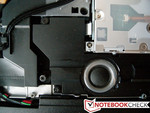
Speakers
You rarely hear or say this about a laptop, but the sound quality in the Envy 17 is outstanding compared to a vast majority of other notebooks on the market. The "Beats Audio" sound system consists of 6 speakers and a small subwoofer that all contribute to an impressive soundscape. Listening to music while working on this laptop a decidedly pleasant experience.
A novel feature on the new Envy series is the physical volume knob branded with the Beats Audio logo. Other than controlling the volume, it also acts as a button that gives you access to a control center, which lets you adjust a number of audio-related preferences and also includes a graphic equalizer. The only issue we have is that sounds could have been louder, but you can only expect so much from such small speakers.
Battery Life
Power consumption
Thanks to the ability of the Envy 17 to switch between integrated Intel graphics and the dedicated Radeon, the power saved even when the laptop is idle is approximately 5 W compared to consistently using the HD 7690M GPU. Although this doesn't sound like much, it makes a difference in the long run (literally). On the lower end of the "load" measurement, we ran the Envy on 3DMark 06, essentially mimicking a game being played. Its maximum current consumption during full load, 111.2 W, shows that the 120 W power adapter is barely adequate for the Envy 17.
| Off / Standby | |
| Idle | |
| Load |
|
Key:
min: | |
Battery Life
For a 17.3-inch laptop with a powerful quad-core processor, the Envy 17's battery life is more than acceptable - much thanks to the laptop's ability to switch between the integrated and dedicated GPUs. The high-capacity 6-cell battery (approx. 83 Wh/6700 mAh) is of course also a critical factor that helps the Envy run on battery power for quite some time.
In Battery Eater's "Reader" test the notebook exceeds HP's specification of 5 hours and 25 minutes and stays alive for 6 hours and 37 minutes. This test is, however, not very realistic as it consists of doing essentially nothing; the display brightness is turned down to its minimum setting, the graphics are switched to Intel's integrated, wireless connections are turned off and the program simulates reading a text document until the computer enters hibernation.
Web browsing with WLAN is a considerably more realistic scenario. In this test the display brightness is kept just below the maximum setting and the browser loads a new page with varying content every 40 seconds. It misses the 4 hour mark here, but not by much. Movie playback is a bit more demanding, although all but the longest titles should be able to run their course during your flight or train ride.
The "Load" test is Battery Eater's "Classic" test with the brightness on its maximum setting, the dedicated GPU on and an OpenGL 3D rendering window active. In this case the battery dies after just an hour and a half. Most games will use even more power than this test.
Verdict
On the whole, the new Envy 17 3D is a highly versatile notebook with an impressive design, feature set and build quality. The fact that it is also comparatively slim and lightweight for a laptop in its size category improves our overall impression. The wide range of ports, including 3x USB 3.0 and 2x DisplayPort, is commendable, although the USB ports in particular could have been more spaced further apart for additional room.
The laptop is well suited as an entertainment machine, but will also do an equally good job for most professional users. Gamers, on the other hand, may want to look for a system with a faster graphics card than the Radeon HD 7690M - especially those who are looking for a high-end stereoscopic 3D experience.
If movies and music are on the top of your list, it is currently difficult to think of a better-suited laptop. The high-resolution 3D screen and remarkable sound system (for a laptop) both contribute to pleasant movies and music experiences. On the downside, the notebook also emits quite a bit of unwanted noise from the dual fans.
For the current starting price of $1,449.99, it is hard to call the Envy 17 3D a bargain. Neither do we call it expensive, however, when you consider the base specifications. The price premium compared to the non-3D version is small, since that the Envy 17 3D is also generally equipped with a better processor and more RAM than its non-3D counterpart.








